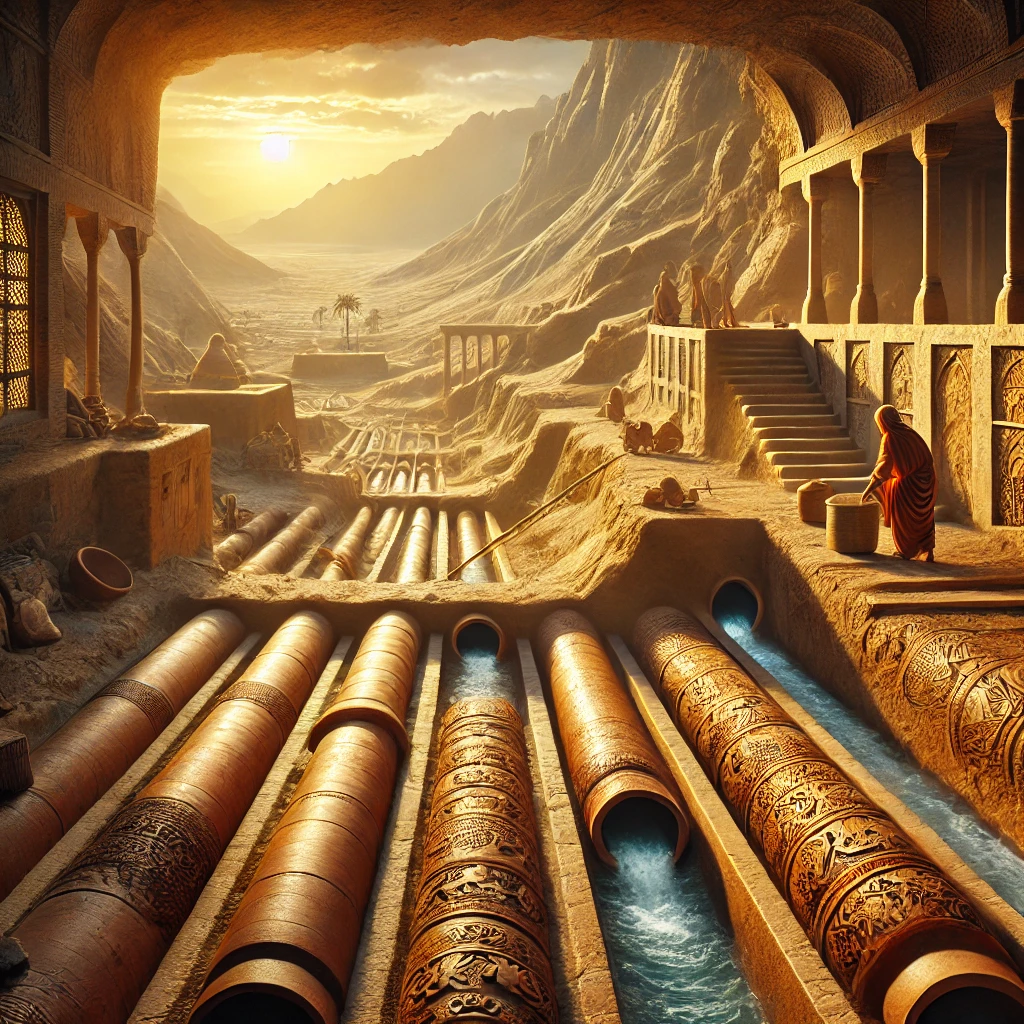
Ancient Iranians and Their Pioneering Role in Plumbing and Water Supply
Ancient Iranians are recognized as pioneers in water supply and plumbing technologies worldwide. Historical evidence shows that plumbing and water supply systems existed in Iran about 4,500 years ago in ancient cities such as Babylon. These systems were primarily used to transport water from springs and rivers to urban areas and surrounding farms. This article examines the history of plumbing, water supply systems, and related technologies in ancient Iran.
Prominent Examples of Plumbing Systems in Ancient Iran
Qanats
One of the most famous water supply systems in ancient Iran was the qanats. Qanats were underground water supply networks used to transport water from elevated areas to dry, lower-lying regions. These systems consisted of tunnels of various lengths, which directed water from springs or underground sources to agricultural and urban areas. Qanats are still used in some parts of Iran and play a significant role in supplying water in dry regions.
Water Canals
Water canals were another method of water supply in ancient Iran. These canals were used to transfer water from rivers to agricultural lands and cities. One of the most famous of these canals is the Dariush Canal at Persepolis, which demonstrates the engineering capabilities of the ancient Iranians during the Achaemenid era.
Sewer Systems
In addition to water supply, the ancient Iranians also designed sophisticated sewer systems for the collection and disposal of wastewater. One of the oldest known sewer systems in Iran was discovered in the ancient city of Shahr-e Sukhteh in Sistan and Baluchestan. This system included underground pipes for directing wastewater.
Materials Used for Pipes in Ancient Iran
Clay Pipes
One of the most common materials for making pipes in ancient Iran was clay. Clay pipes were made from clay and then fired in kilns. These pipes were highly suitable for water transport due to their resistance to corrosion and water.
Stone Pipes
In some regions of ancient Iran, stone pipes were also used. These pipes were carved from stone and, due to their high strength, were suitable for transporting water over long distances. Stone pipes were primarily used in mountainous and rugged areas.
Lime Pipes
In some areas, lime pipes were used because of their resistance to water and erosion, especially for transporting drinking water. These pipes were made from a mixture of lime and water and were also used in some cases to connect other components.
History of Water Plumbing in Ancient Iran
The Importance of Plumbing in Ancient Iran
Plumbing systems in ancient Iran not only helped supply drinking water to people but also played a vital role in irrigating farms and boosting agriculture. These systems contributed to economic and industrial development and improved the quality of life for the people. During the Sassanian era, significant advancements in plumbing technology were made.
Iranians as Pioneers in Plumbing Worldwide
Historical evidence shows that ancient Iranians were pioneers in the use of plumbing systems. Especially during the Sassanian period, Iranians were able to improve water supply and plumbing systems by utilizing complex technologies. Pipes called “Sarooj,” a mixture of lime, gypsum, egg whites, and other materials, were used to create pipes and connect components.
Tanbushes
During the Sassanian era, another type of clay pipe known as “Tanbushes” was used. These pipes were particularly used in irrigation and water supply systems for agriculture and were also used in spiral plumbing systems to transport water to tall buildings.
Shushtar Water Supply System: A Marvel of Iranian Ingenious Creativity
One of the most outstanding examples of water supply systems in ancient Iran is the Shushtar Water Supply System. This system, which is listed as a UNESCO World Heritage site, is a complex network of bridges, dams, mills, waterfalls, and underground canals that, by the force of gravity, directs water from the Karun River to various parts of the city and surrounding agricultural lands.
Components of the Shushtar Water Supply System
- Bridges: Several bridges, such as the Shadravan Bridge and the Band-e-Gargar Bridge, were built over the Karun River, which not only allowed for transportation but also played a role in controlling water flow and directing it to the canals.
- Dams: Various dams, such as the Mizun Dam and the Sharabdar Dam, were used for diverting water and controlling water levels.
- Mills: Watermills in this system used water power to grind grains and agricultural products.
- Waterfalls: Artificial waterfalls in this system not only added beauty to the environment but also helped oxygenate and cool the water.
- Canals and Tunnels: A complex network of tunnels and underground canals was used to direct water to various regions.
Conclusion
The plumbing and water supply systems in ancient Iran are exemplary models of engineering and technology in world history. These systems not only helped supply water to cities and farms but also played a crucial role in the economic and social development of ancient Iran. Today, considering the water issues faced by many countries, studying these ancient systems can provide valuable insights into water resource management and improving water supply conditions worldwide.
